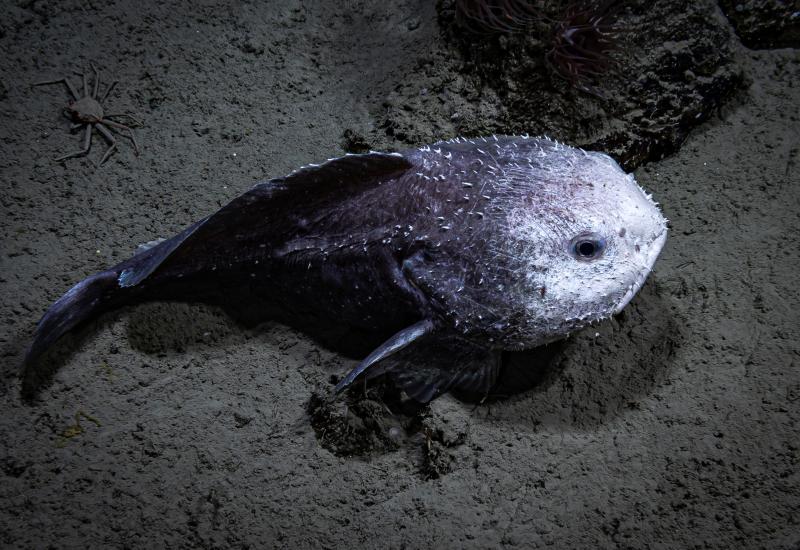Underwater Photo Gallery: Camouflaged Critters
When we think of tropical reef creatures, we tend to think of a kaleidoscope of brightly colored and patterned animals. But there are many reef creatures that have adapted in such a way that they can hide in plain view; these masters of camouflage are easy to swim past without seeing.
The great pretenders are typically quite stationary animals that hunker themselves down, waiting for their prey to swim by. Others use their mastery of disguise to hide themselves from predators.
Common critters that are great at camouflage are scorpion fish, and their cousins, stone fish. These animals are highly venomous, and are so artful at camouflage that they can be almost impossible to see, and therefore can be of great peril to divers who make the mistake of touching down on the reef.
Cephalopods, especially octopus, are clever color and shape shifters — and can do so in an instant, matching themselves to whatever backdrop they find themselves on. The Mimic Octopus, seen in the west Pacific, is infamous for its ability to mimic the shapes, and behaviors, of other animals. Cold-water octopuses are great pretenders too — I remember on one dive swimming around a corner and surprising a Giant Pacific Octopus that was out on a wall. It first turned a dark grey, trying to meld into the rocks behind it, then suddenly flashed bright red, then changed to white, then to black, then stripes, all changes happening instantaneously — in something that biologists call a deimatic display — which is kind of the opposite of camouflage, where instead of trying to disappear using camouflage, the creature uses bold stripes, color flashes etc to warn off perceived aggressors. I gave this big, agitated octopus a wide berth ;^)
You see a lot of great camouflaged critters on muck dives too. Animals often blend in to make themselves look like rocks, or bits of coral, or bits of algae, or...
So here is a gallery of some tropical Pacific masters of disguise. All of these images were captured recently, in either the Philippines or in the southwest region of the big island of Sulawesi in Indonesia.
More Adventures with Judy G:
We Are Family: Amazing Anemonefish | Looking for Mr. Little | Diving Komodo National Park
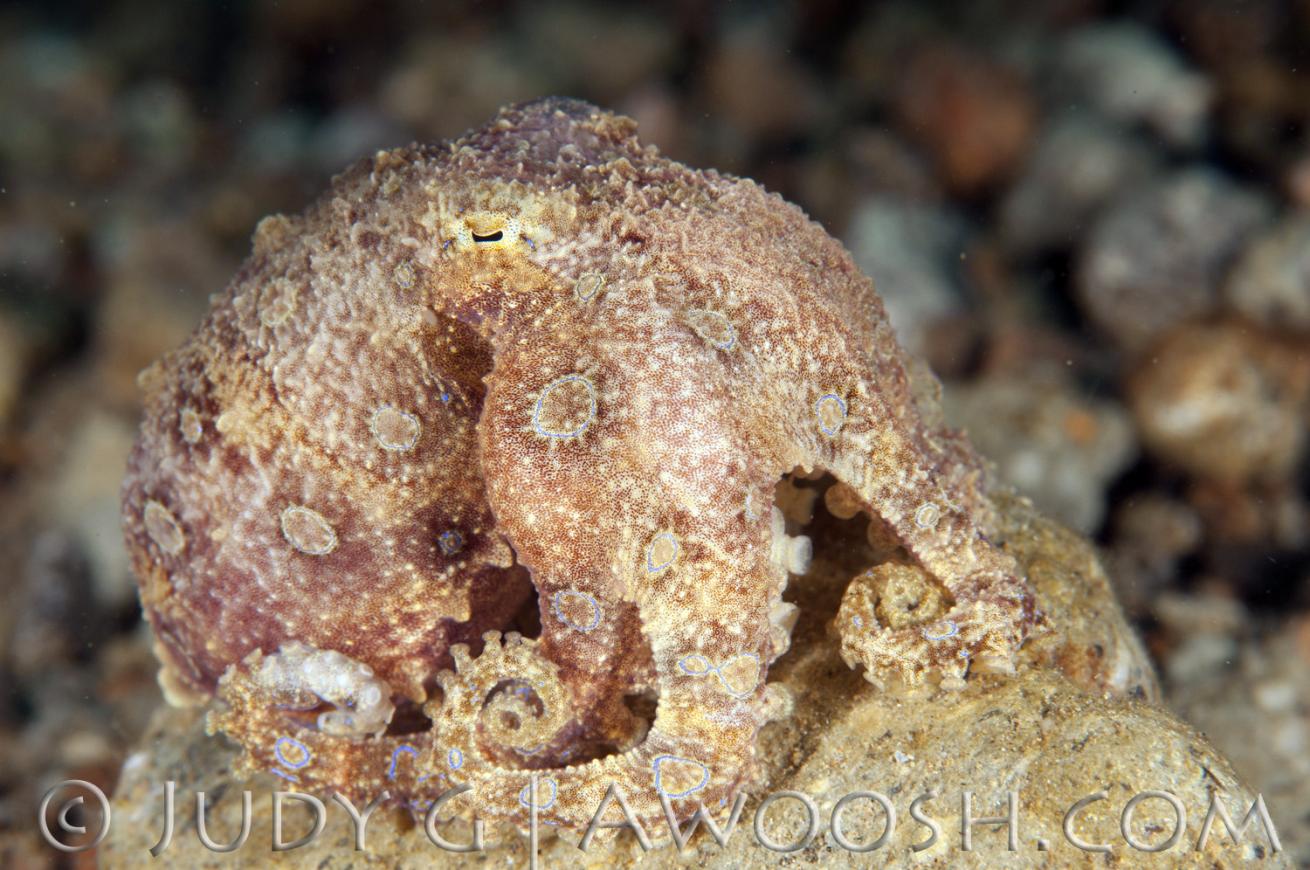
Judy GArguably the most venomous creatures in the ocean, these little blue ring octopuses are also artful at camouflage. As I described in my short essay, octopuses are capable of both camouflage and deimatic displays. This type of octopus, when agitated, tends to go quite bright yellow in color, and the blue rings on it become much more pronounced and very iridescent. This particular octopus was trying to escape the paparazzi by muting itself down and blending into its immediate environment, so as to try to look like the rock on which it is perched.
When we think of tropical reef creatures, we tend to think of a kaleidoscope of brightly colored and patterned animals. But there are many reef creatures that have adapted in such a way that they can hide in plain view; these masters of camouflage are easy to swim past without seeing.
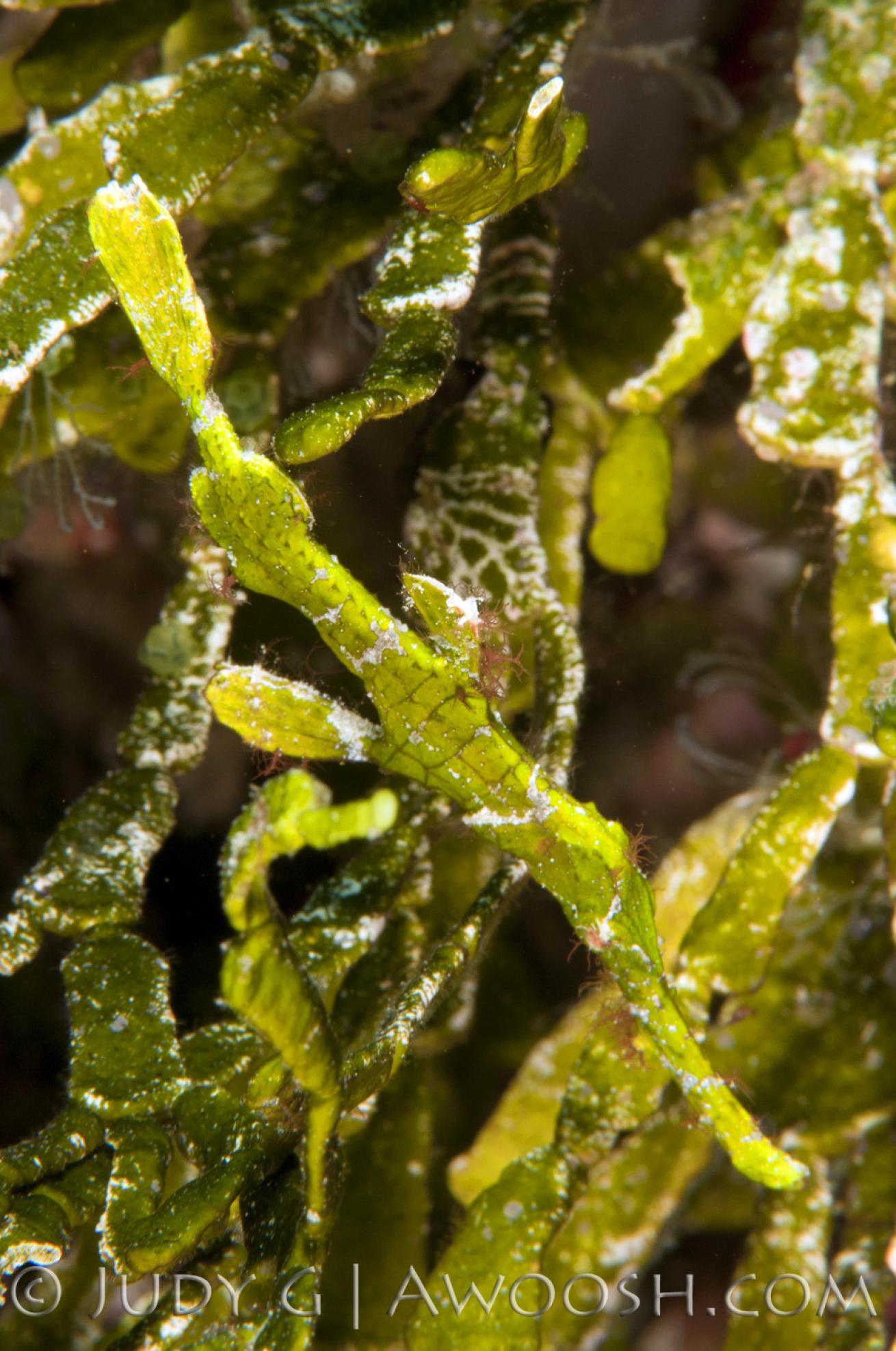
Judy GThis fish has evolved to blend in perfectly with the Halimeda algae where it lives. These fish are so well camouflaged that it requires very sharp eyes to spot them. In fact, I did not even see the second fish (below and to the left) that is in this picture until reviewing the shot for this gallery! These fish grow to about four inches in length.
The great pretenders are typically quite stationary animals that hunker themselves down, waiting for their prey to swim by. Others use their mastery of disguise to hide themselves from predators.
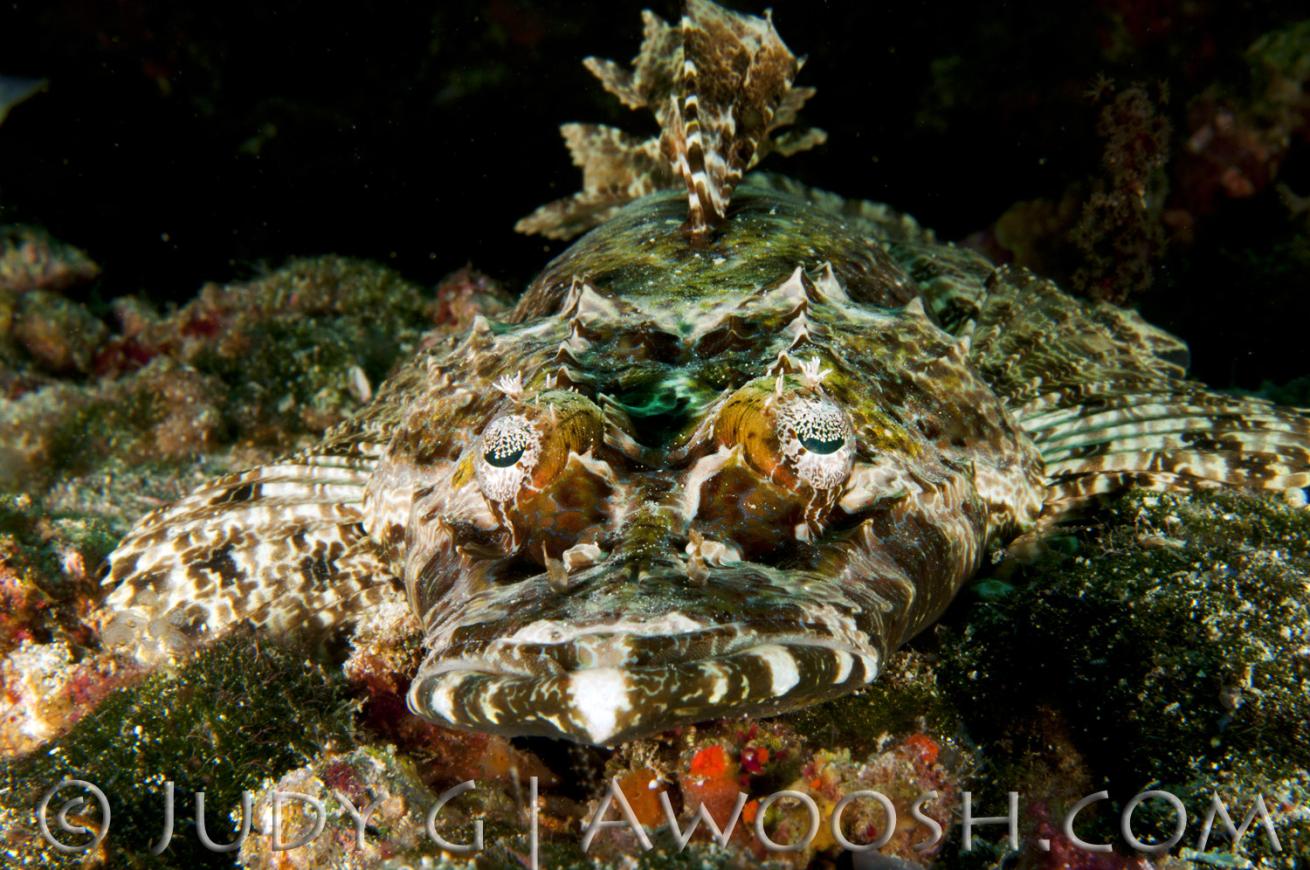
Judy GCheck out this crazy critter — it does look quite a bit like a crocodile — long flat snout and head, long body and tail. These are ambush predators that lie in wait on the bottom or on a shelf on the reef (as this one was), until an unsuspecting tasty morsel swims by, then — Wham! — they strike with lightening speed. They are not easy to spot as they are very capable of camouflage, and tend to blend in to the rubble on which they perch. These are quite big fish — a couple of feet in length.
Common critters that are great at camouflage are scorpion fish, and their cousins, stone fish. These animals are highly venomous, and are so artful at camouflage that they can be almost impossible to see, and therefore can be of great peril to divers who make the mistake of touching down on the reef.
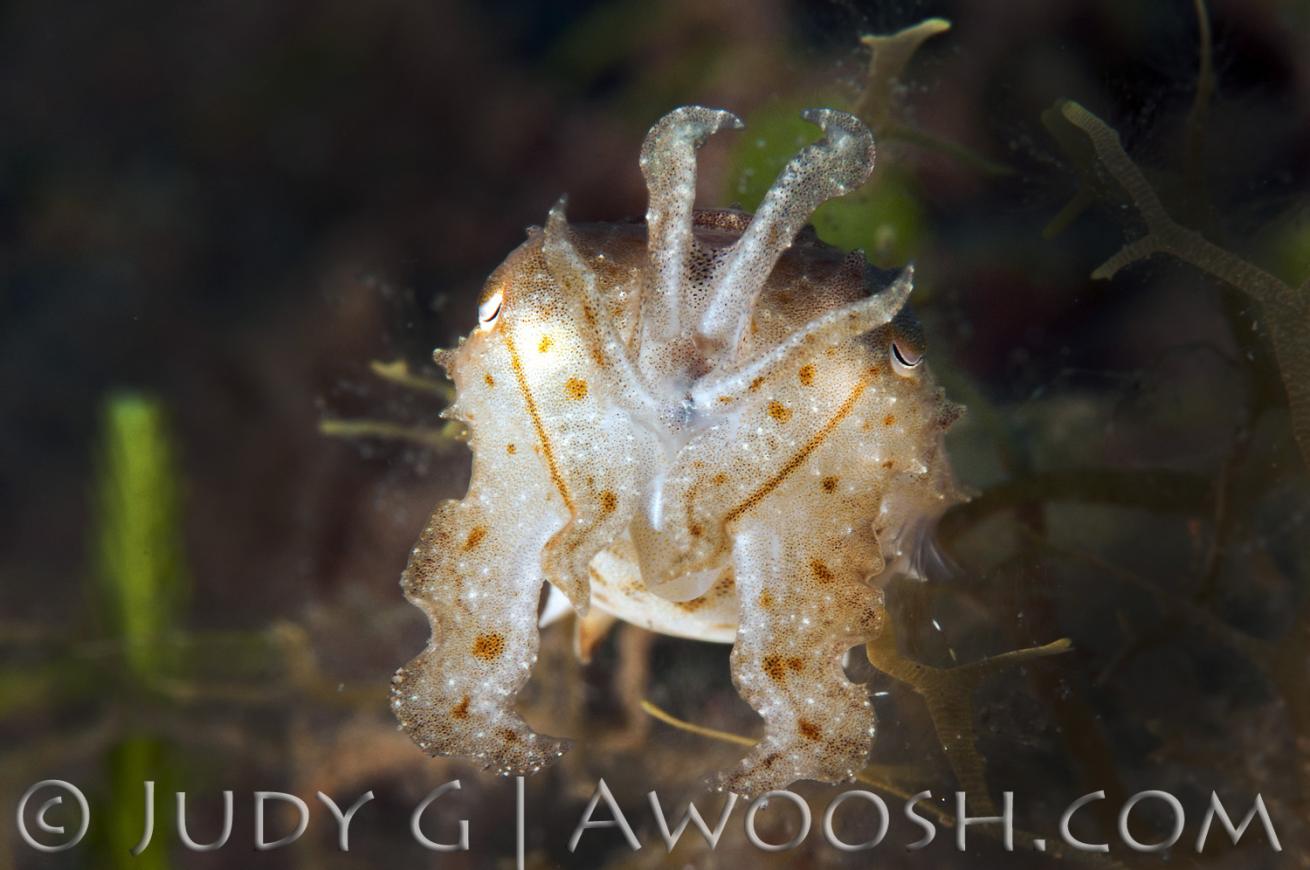
Judy GThis little cutie is (I think) a Crinoid Cuttlefish. Like other cephalopods (octopus, squid), this animal is capable of color changing to blend in to its environment to escape predation. This cuttlefish was about 2 inches in length.
Cephalopods, especially octopus, are clever color and shape shifters — and can do so in an instant, matching themselves to whatever backdrop they find themselves on. The Mimic Octopus, seen in the west Pacific, is infamous for its ability to mimic the shapes, and behaviors, of other animals. Cold-water octopuses are great pretenders too — I remember on one dive swimming around a corner and surprising a Giant Pacific Octopus that was out on a wall. It first turned a dark grey, trying to meld into the rocks behind it, then suddenly flashed bright red, then changed to white, then to black, then stripes, all changes happening instantaneously — in something that biologists call a deimatic display — which is kind of the opposite of camouflage, where instead of trying to disappear using camouflage, the creature uses bold stripes, color flashes etc to warn off perceived aggressors. I gave this big, agitated octopus a wide berth ;^)
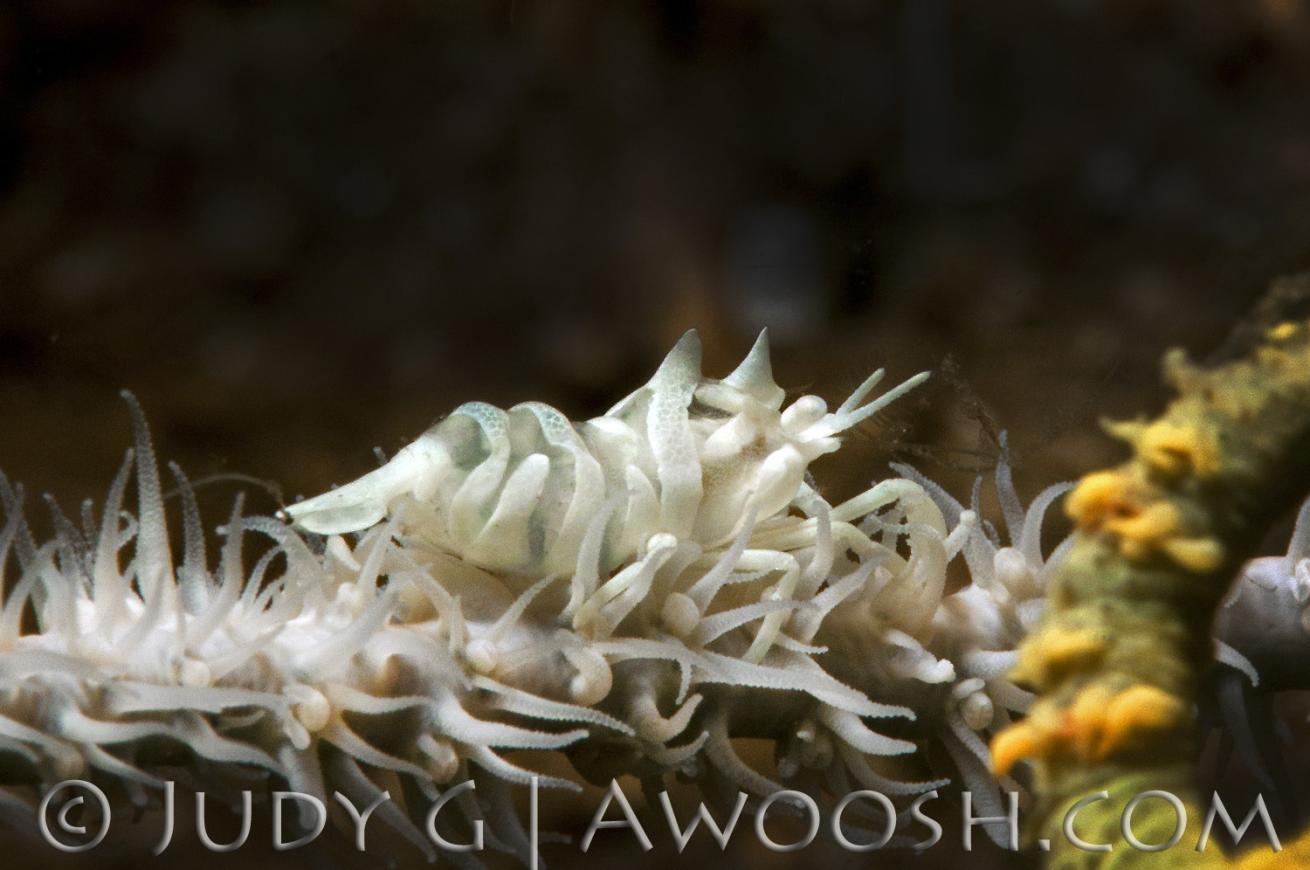
Judy GHere is a tip — never swim past a wire coral without having a closer look. There are several creatures that make their homes on these long, coiled corals, including wire coral gobies, shrimp, and wire coral crabs. These little shrimps are quite tiny — about ¾ of an inch long at most, and typically change to the color of their host coral.
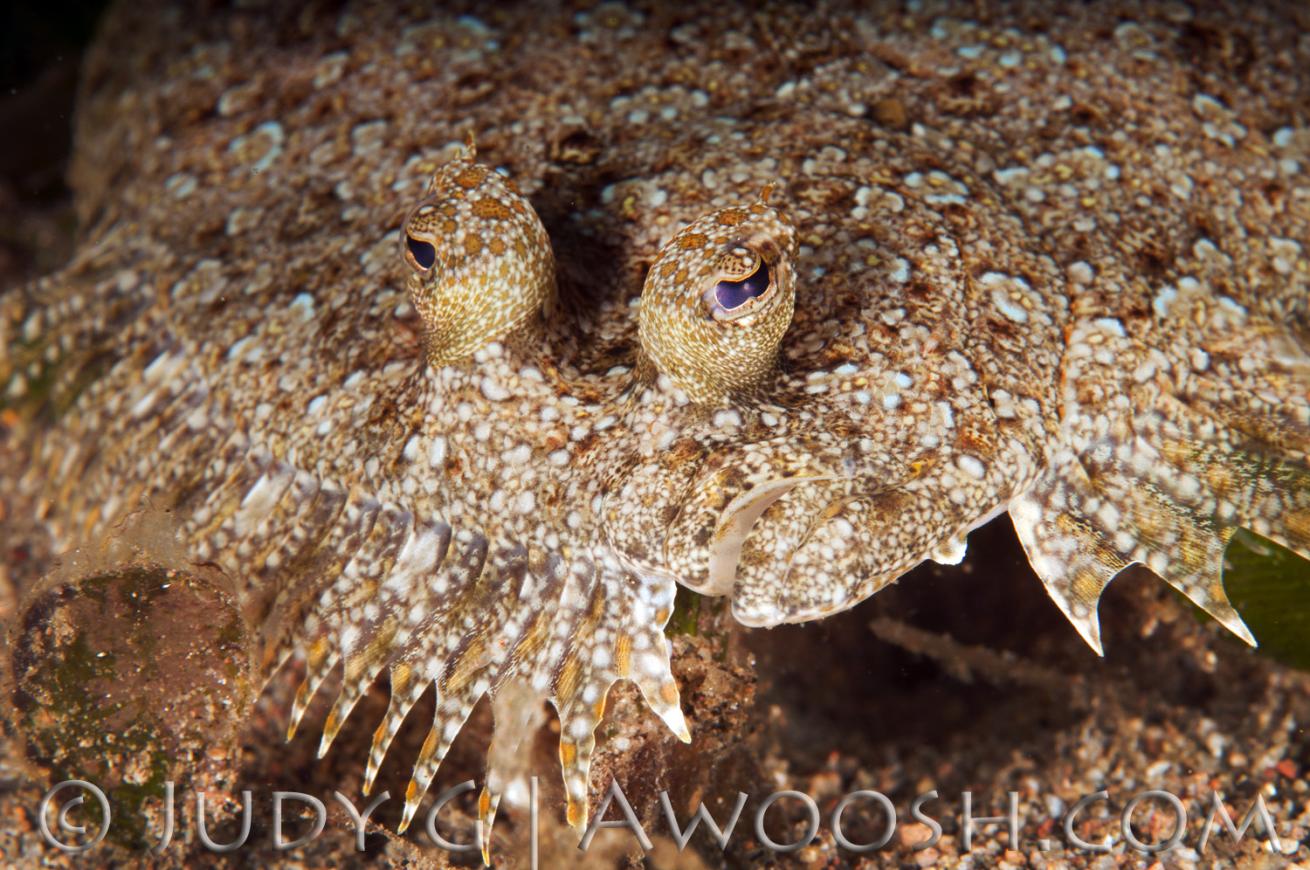
Judy GI would need a full body shot to positively identify this flounder, which unfortunately I did not capture (note to self ;^) ). Flounders and sole are quite common creatures, usually seen (when you can actually see them — they are great at camouflage) on sandy bottoms. This fish was about a foot long.
You see a lot of great camouflaged critters on muck dives too. Animals often blend in to make themselves look like rocks, or bits of coral, or bits of algae, or...
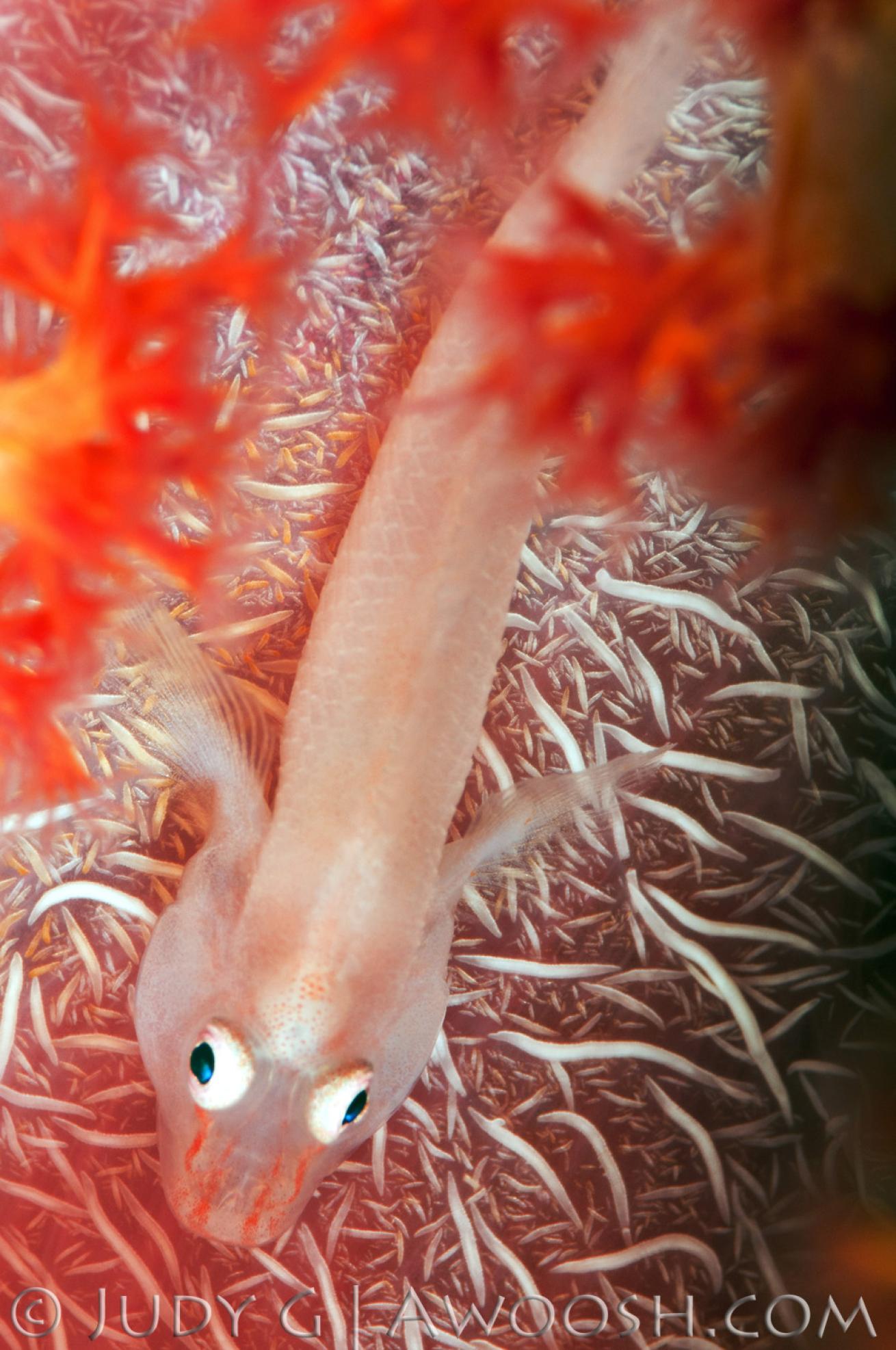
Judy GThis was a first for me — a Soft Coral Ghost Goby. These ghost gobies live exclusively on soft corals and are capable of adapting their appearance to blend in to the coloration of their host. This is a small creature — about 1 inch long at most.
So here is a gallery of some tropical Pacific masters of disguise. All of these images were captured recently, in either the Philippines or in the southwest region of the big island of Sulawesi in Indonesia.
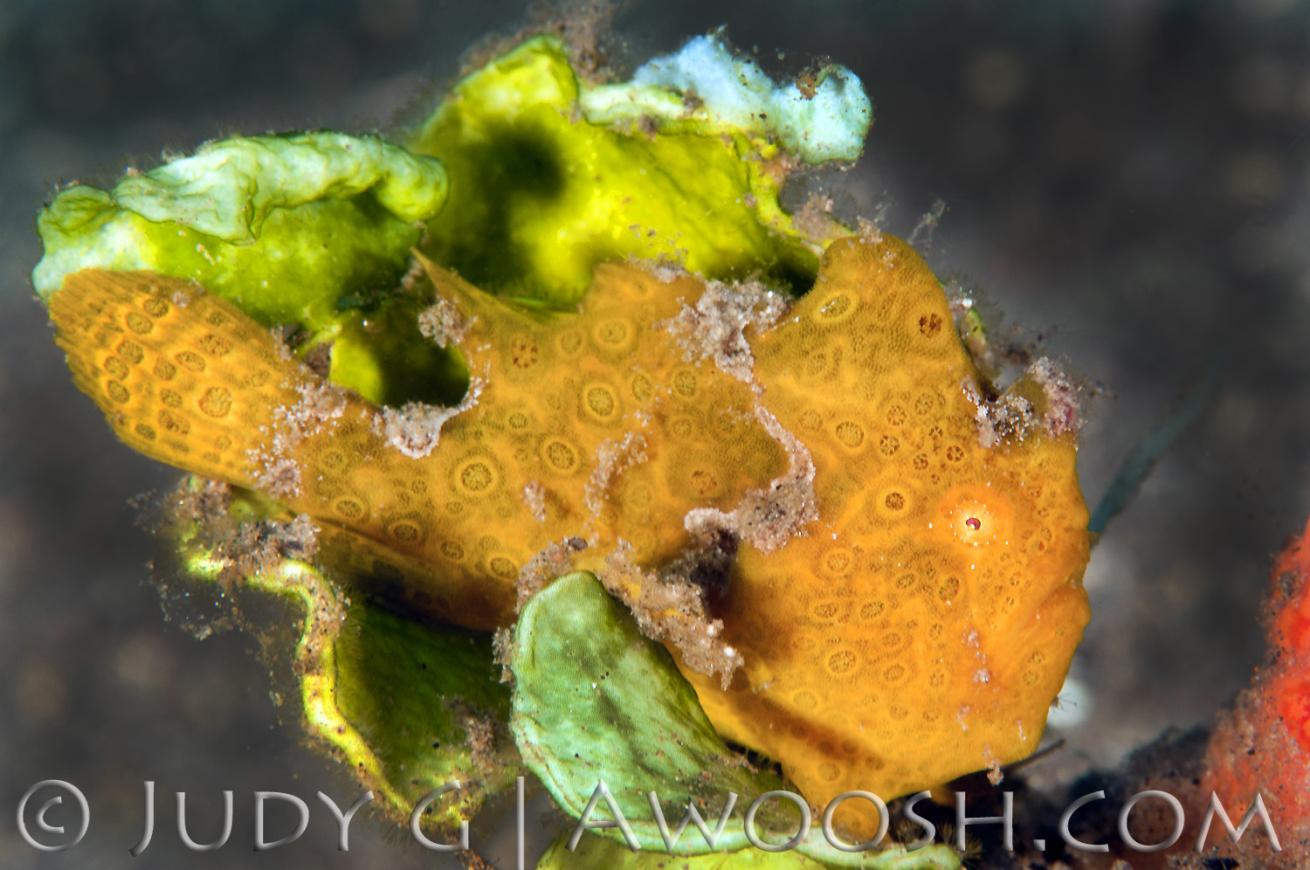
Judy GFrogfish can be very tough to spot as they too are capable of changing color to blend into their environment — although they can’t do this instantaneously like octopuses. They are ambush predators, with some varieties actually having a little ‘fishing pole and lure’ that they deploy from their foreheads to attract prey. Frogfish come in all sorts of colors, textures and sizes. This Painted Frogfish was about 4 inches in length.

Judy GThis fish perches on the reef — usually on sponges or corals, and sways in the current, much like a leaf would do, hence the name. They come in a variety of colors (including hot pink!) and can adapt their coloration somewhat to blend in to their environment.
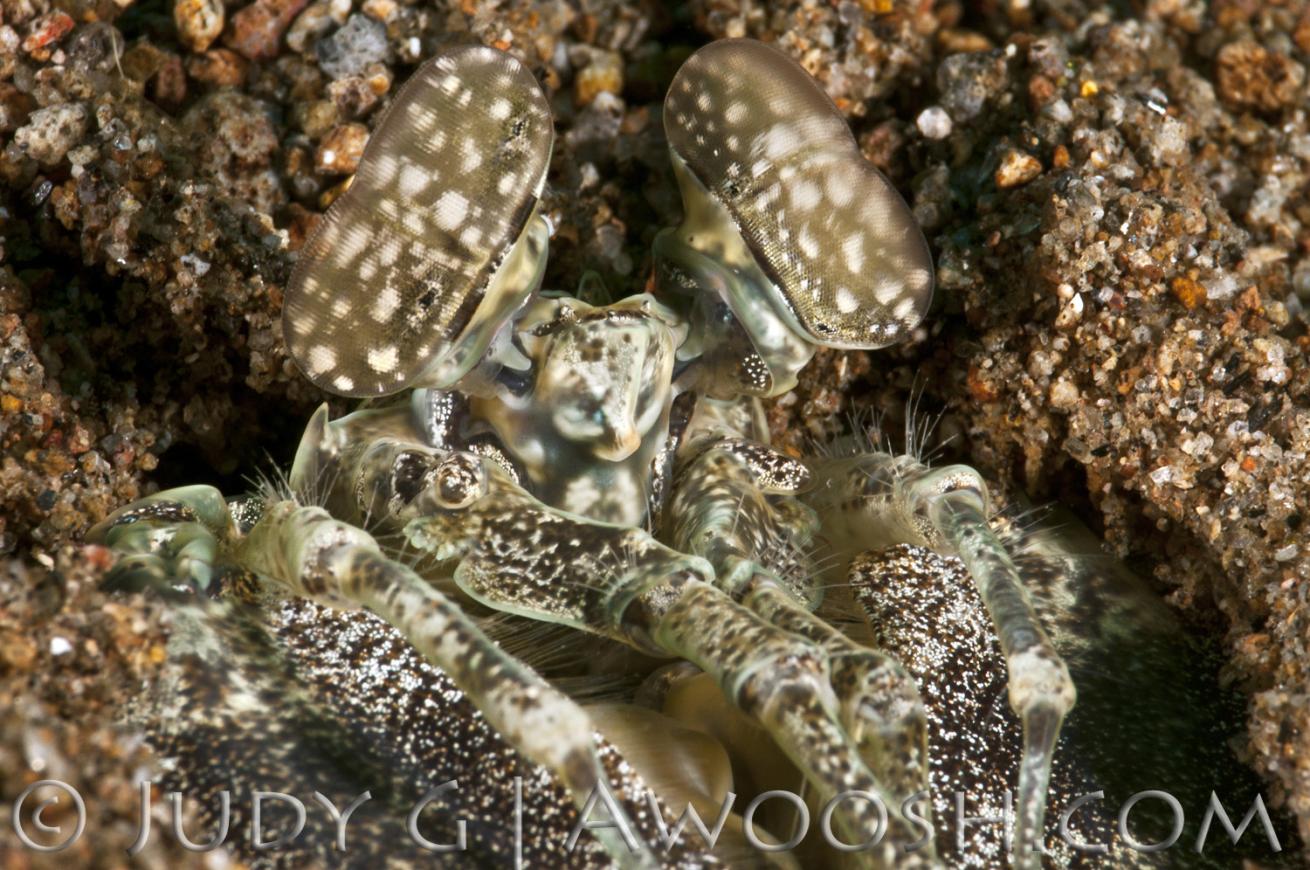
Judy GI think this is a Tiger Mantis, but it is difficult to confirm without seeing it out of its lair. Unlike some of the other mantis shrimps that are brightly colored (Peacock, Golden etc) this shrimp is adapted to blend into its sandy bottom home and can therefore surprise its prey as they swim or scurry by. The head of this big shrimp is a couple of inches in diameter.
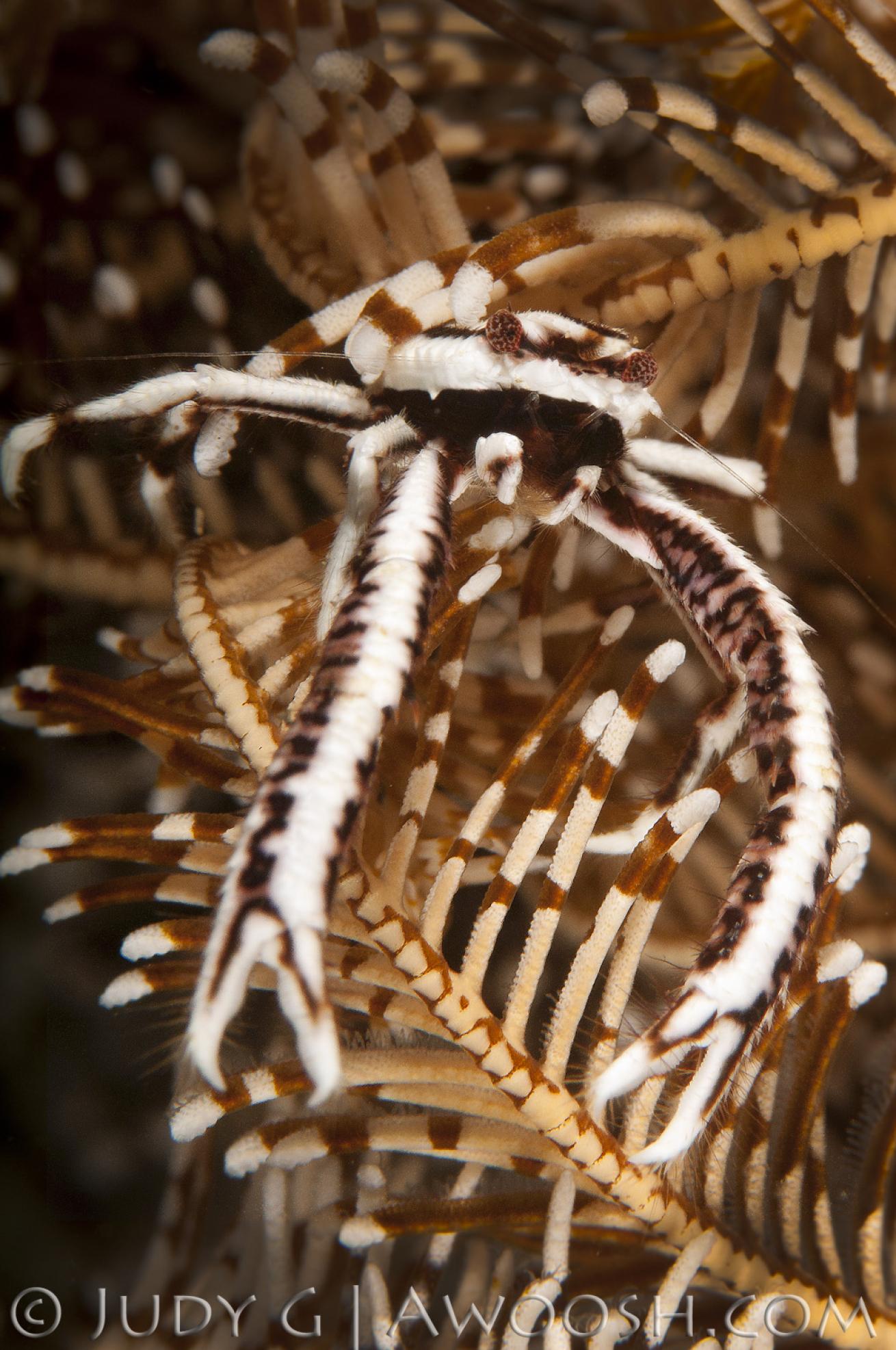
Judy GThese intriguing (and tough to photograph!) squat lobsters make their homes on crinoids, which are very strange, fern-like animals that can walk along the reef and swim! These squat lobsters take on the coloration of their host crinoid, and tend to burrow down in the center, so they can be devilish to detect. These are very small crustaceans, maxing out at about ¾ of an inch in length.
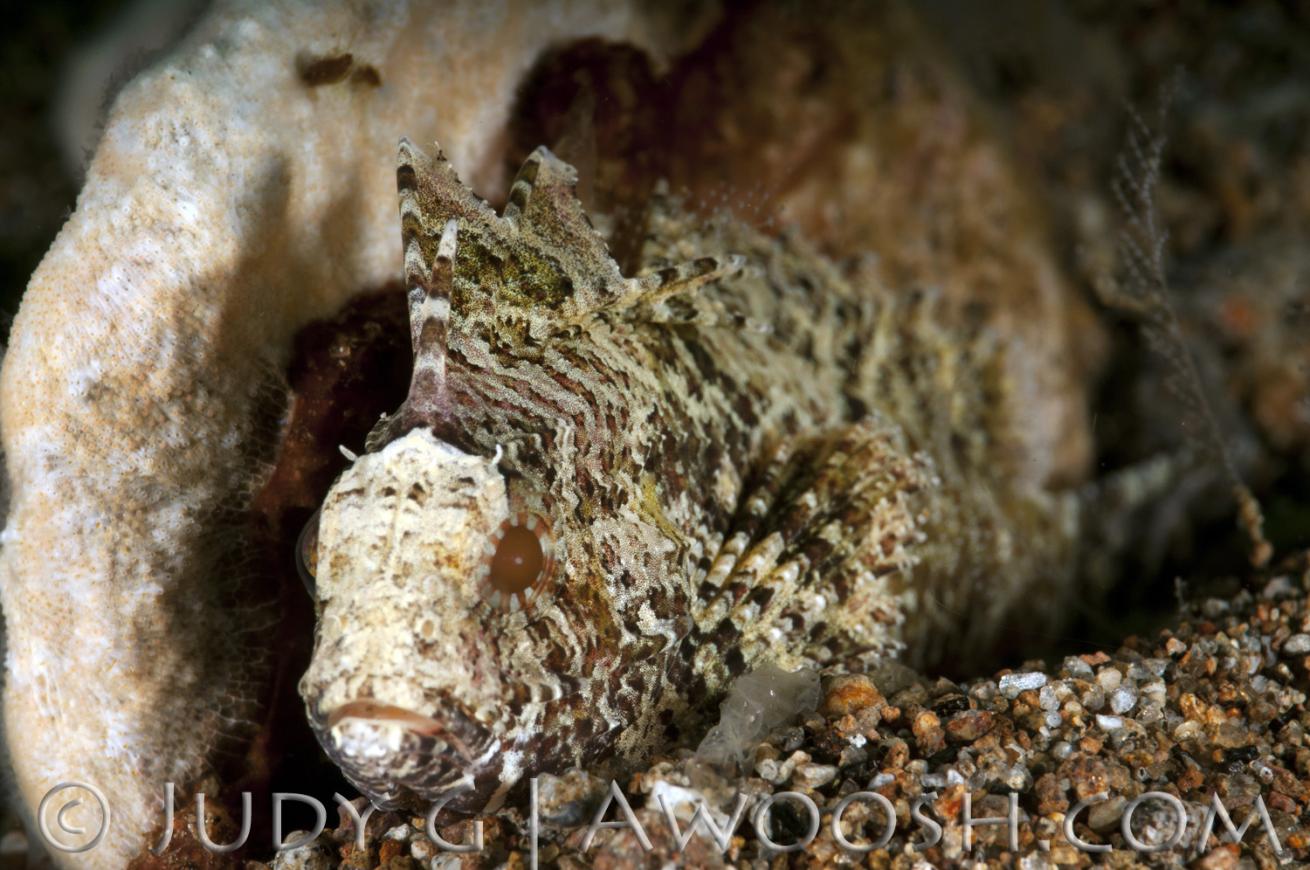
Judy GI don’t think this fish is an animal that is capable of color-changing, but its muted coloration and its habit of lurking on the bottom makes it quite difficult to spot. They can grow to about 5 inches in length — this one was a couple of inches at most. I fortunately don’t have personal experience of this, but I suspect, given the name and the fact that this fish belongs to the scorpion fish family, that this little fish is capable of inflicting a painful sting via its dorsal fin spines.

Judy GTalking about hiding in plain sight — these tiny skeleton shrimp (that seriously look like alien beings!) create colonies like this on small hydroids. These are the kinds of critters that, without the help of a magnifying glass or macro lens, are pretty much impossible to see. Watching them closely can provide huge entertainment — they are in constant motion and appear to bop each other frequently with their long appendages. These are about an inch long.
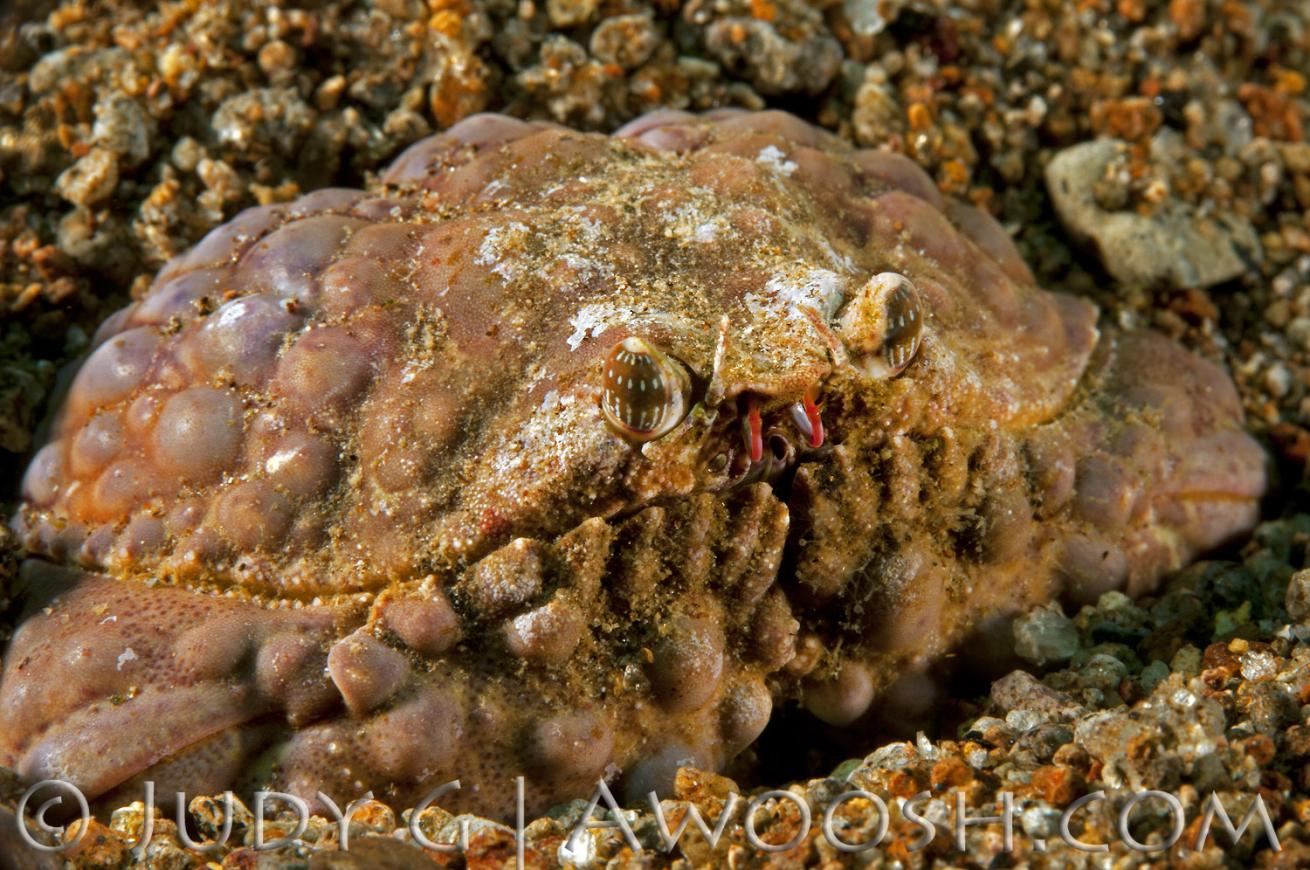
Judy GThis little crab camouflages itself by burrowing down in the sandy bottom, and uses its long eye stalks like periscopes to watch for predators or prey.
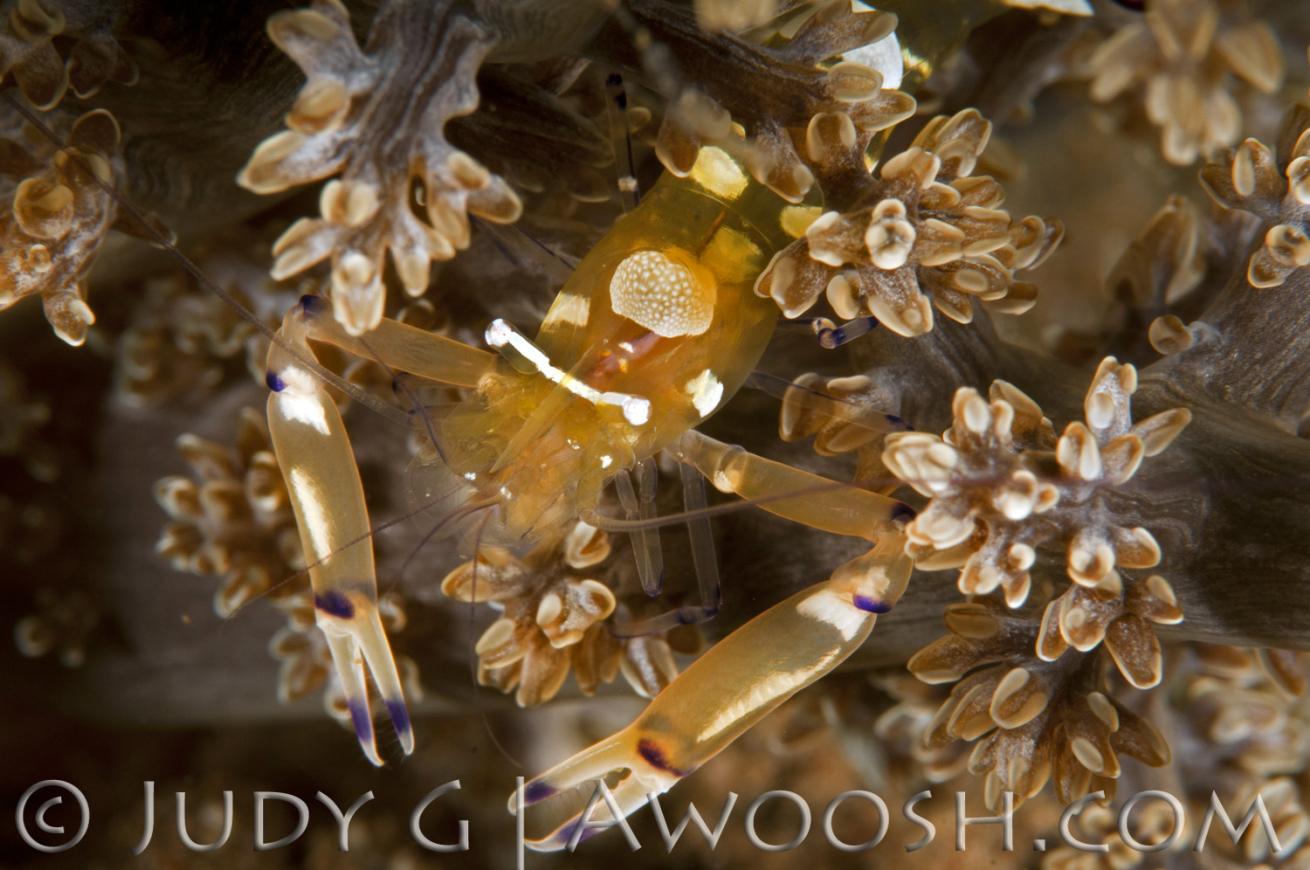
Judy GThis little shrimp has adapted itself to blend in to the anemones on which it lives. These shrimp grow to about 1½ inches in length.
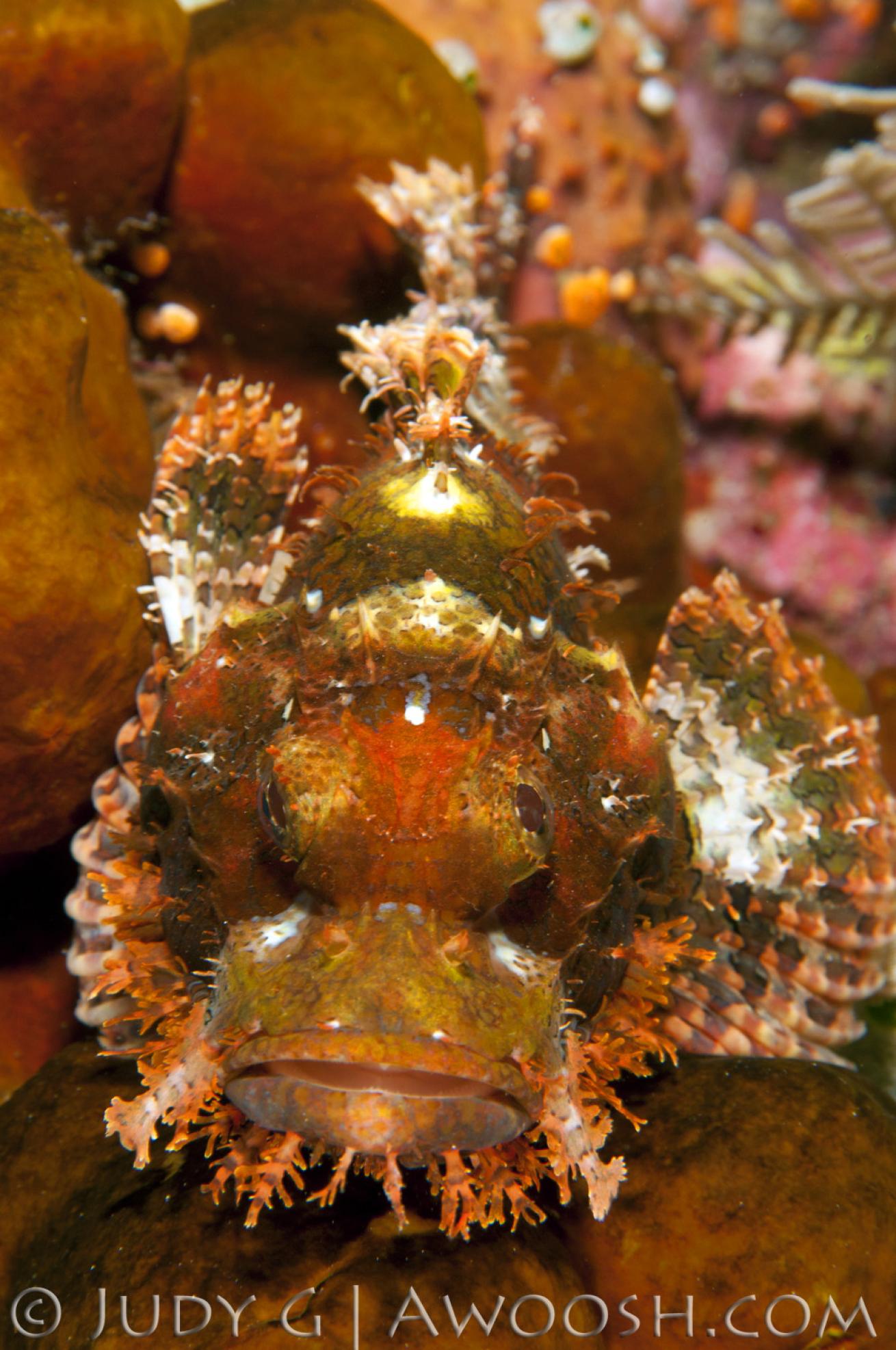
Judy GThese beautiful but venomous fish are masters of disguise, with an ability to change color to match the surface on which they hide, in plain view. This fish closely resembles a Tassled Scorpionfish, except that it has a shorter snout.

Resolution: I will subscribe to Scuba Diving magazine. ;)
More Adventures with Judy G:
We Are Family: Amazing Anemonefish | Looking for Mr. Little | Diving Komodo National Park


